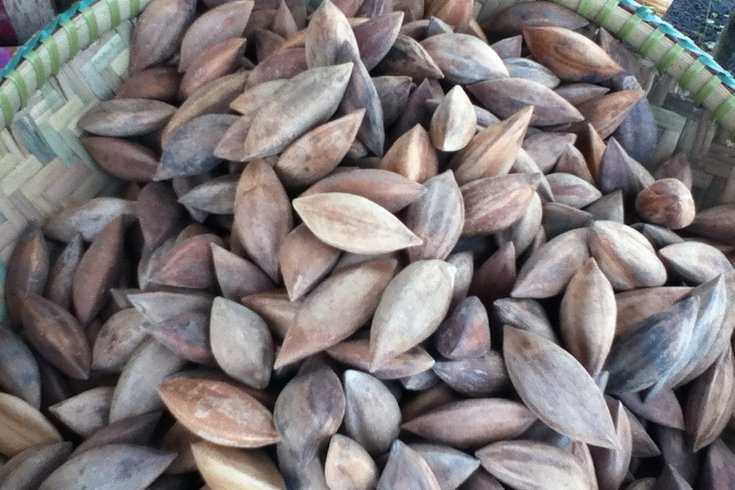
April 30, 2019
 Photo courtesy/Wikimedia Commons
Photo courtesy/Wikimedia Commons
Unshelled pili nuts from the Philippines.
Whether a focus on healthy eating rules everything that you put in your mouth or you’re a little more lax, chances are you probably enjoy snacking on a handful of nuts from time to time — they’re easy to eat, filling and tasty.
That said, there’s a trending nut that you might want to throw into your mix — especially if you’re following a low-carb or ketogenic eating plan is the pili nut. They are far and away the lowest carb nut available, with just one gram of carbs per quarter-cup serving, according to MindBodyGreen.
Pili (pee-LEE) nuts are the fruit of a large evergreen tree that grows in Southeast Asia and Northern Australia, according to Superfoodly. They are brown teardrop-shaped seeds that protect the white, smooth — almost skinless almond-looking — nut inside.
RELATED READ: Everything you need to know about flaxseed – and what it can do for you
According to Vogue:
When consumed raw, pili nuts have a light flavor reminiscent of sunflower seeds. After roasting, they transform into decadent morsels with a chewy exterior that quickly yields into a melting, buttery texture evocative of plant-based foie gras.
These interesting nuts also pack a uniquely impressive nutritional profile, serving as a complete source of protein and all of the amino acids, according to Organic Facts. They also boast very high magnesium levels — the highest of any nut — and can fulfill a person’s daily required intake of copper and manganese in just one 100 gram serving.
MindBodyGreen reports:
“Pili nuts can be a great option to add to the rotation and incorporate heart-healthy fats into your diet,” says Jess Cording, R.D., registered dietitian and mbg Collective member. “An ounce (about 15 kernels) provides around 200 calories and 22 grams of fat — 11 grams of monounsaturated fat, 8 grams of saturated fat, and 3 grams of polyunsaturated fat.”
While the nutritional profile is quite palatial, pili nuts’ health benefits are nothing to scoff at, either. According to Organic Facts, these nuts can help balance cholesterol levels, aid in weight loss, reduce inflammation, prevent chronic disease, stimulate cognition, detoxify the body, control diabetes, improve bone health, aid in sleep, and boost energy.
It’s also worth noting that, unlike almonds, pili nuts are a rather sustainable nut option. Pili trees are low-maintenance growers, sprouting up with only the help of rain, Vogue reports, and take root in nutrient-dense volcanic soils.
There is some bad news. Food and Wine reports that pili nuts, while grown across the Pacific region, are currently exported from one place – the Philippines — which means they can be tricky to find in the United States.
That said, Amazon is a great resource for folks interested in reaping the nutritional and health benefits of pili nuts — they’ve got pili nut butters, flavored snack bags and more. You also might run into pili nuts in the form of yogurt by the brand Lavva, a vegan yogurt company, in places like Whole Foods and MOM’s Organic Market.